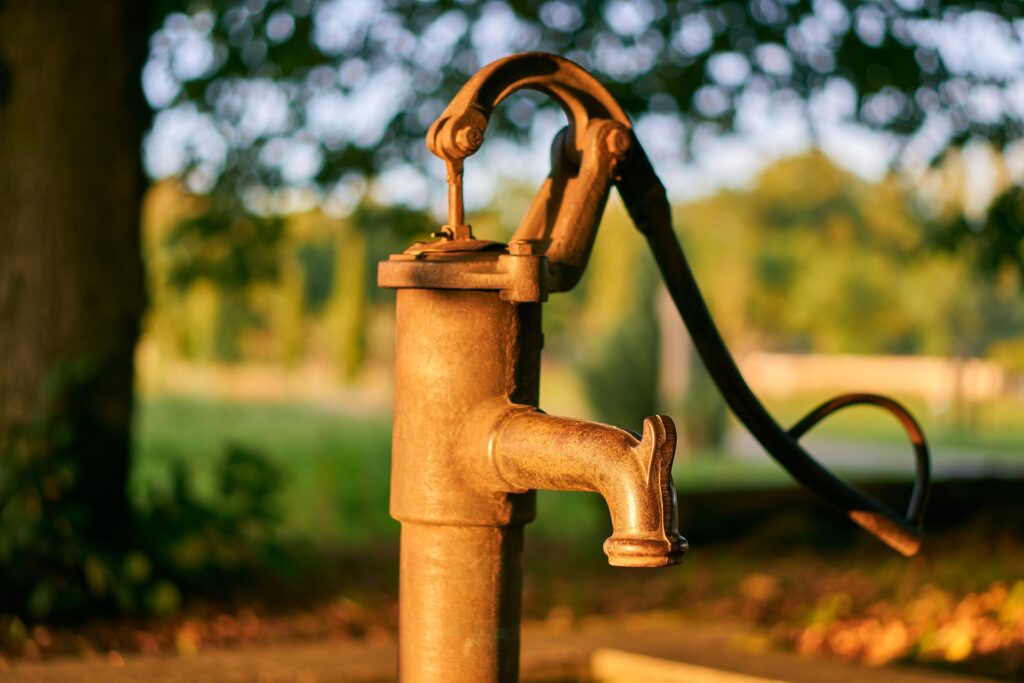There are different types of water pumps available in the market for various applications. A pump is a machine for transferring fluids (gases or liquids) or slurries by mechanical action, commonly transformed from electrical power into hydraulic energy.
⇒ View a List of Pumps for Sale and Their Suppliers ⇐
What is a Water Pump?
A water pump is a device used to increase water pressure to transfer it from one position to another. Modern water pumps are used worldwide to supply water for agricultural, municipal, industrial, and residential applications. Water pumps are also utilized to transfer wastewater in sewage processing plants. Recent water pumps most often are operated by electricity, but other energy sources are also used—for instance, gasoline or diesel engines. In some remote regions, such as desert areas, solar panels may be employed to supply electricity to small pumps.
Many types of pumps are employed in distribution systems. Pumps that lift surface water and transfer it to a nearby processing plant are called low-lift pumps. These pumps move large volumes of water at relatively low discharge pressures. Pumps that discharge water into arterial channels are called high-lift pumps. They work under higher pressures. Pumps that raise the pressure in the distribution system or lift water into a high storage tank are named booster pumps. Well pumps elevate water from underground and send it directly into a distribution system.
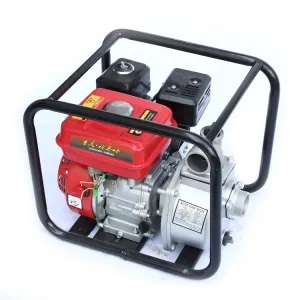
Dynamic Pump
Rotodynamic pumps (dynamic pumps) are a variety of velocity pumps in which kinetic energy is added to the fluid by raising the flow velocity. This increase in energy is transformed to a gain in potential energy (pressure) when the velocity is decreased before or as the flow exits to the discharge line. This change in kinetic energy to pressure is defined by the First law of thermodynamics, or more accurately, by Bernoulli’s principle.
Dynamic pumps can be subdivided according to how the velocity gain is achieved.
These kinds of pumps have some characteristics:
- Conversion of added energy to rise in kinetic energy (increase in velocity)
- Continuous energy
- Conversion of increased velocity (kinetic energy) to make a higher pressure head.
A functional difference between positive-displacement and dynamic pumps is how they work under closed valve states. Positive-displacement pumps physically move fluid, so closing a valve downstream of a positive-displacement pump provides a continual pressure build-up that can lead to mechanical failure of the pipeline or pump. Dynamic pumps vary in that they can operate safely under closed valve conditions (for short periods).
These pumps are classified into various types:
- Centrifugal Pump
- Horizontal Centrifugal Pump
- Vertical Centrifugal Pump
- Fire Hydrant Systems
- Submersible Pump
Positive-Displacement Pumps
A positive-displacement pump moves fluid by trapping a specified amount and displacing (forcing) that trapped volume into the discharge line.
Many positive-displacement pumps employ an expanding cavity on the suction head and a decreasing cavity on the discharge head. Liquid passes into the pump as the cavity on the suction head expands, and the fluid passes out of the discharge side as the cavity collapses. The volume is fixed in each cycle of operation.
Positive-Displacement Pump Behavior and Safety
Unlike centrifugal, positive-displacement pumps can theoretically provide the same flow at its speed (rpm) no matter what the discharge pressure. So, positive-displacement pumps are constant flow devices. However, a small increase in internal leakage as the pressure grows limits an exactly constant flow rate.
A positive-displacement pump should not work against a closed valve on the discharge head of the pump as it has no shutoff head, the same as centrifugal pumps. A positive-displacement pump in a closed discharge valve proceeds to produce flow, and the pressure in the line increases until the pipes burst, the pump is seriously damaged, or both.
A safety or relief valve on the discharge head of the positive-displacement pump is necessary. The pump manufacturer typically provide internal relief or safety valves. The internal valve is regularly used only as a safety precaution, while an external relief valve in the discharge pipe has a return line back to the suction position or supply tank and provides increased safety for human and machine.
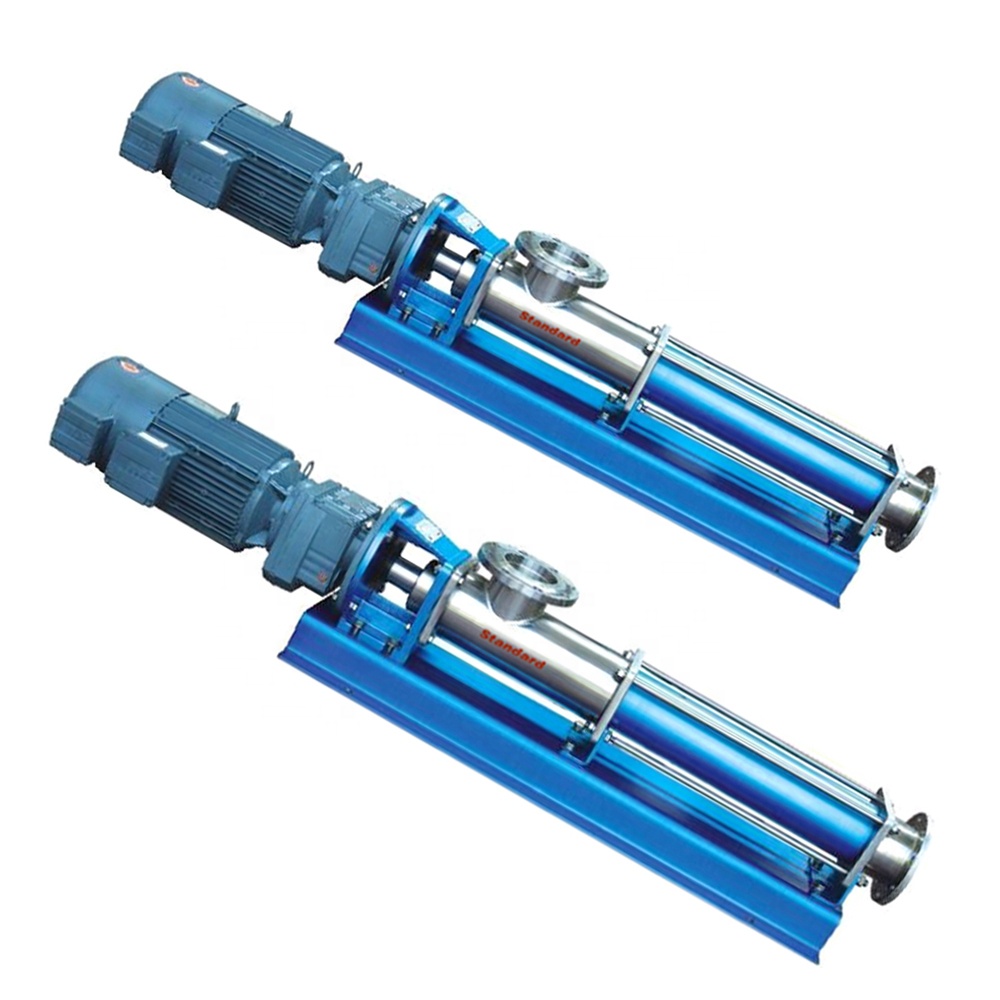
Types of Positive-Displacement
A positive-displacement pump can be categorized according to the mechanism of moving the fluid:
- Rotary-type positive displacement: external or internal gear pump, shuttle block, screw pump, lobe pump, circumferential piston, flexible impeller, flexible vane or sliding vane, twisted helical roots (e.g. the Wendelkolben pump) or liquid-ring pumps
- Linear-type positive displacement: chain pumps and rope pumps
- Reciprocating-type positive displacement: piston pumps, diaphragm pumps, and plunger pumps
Rotary Positive-Displacement Pumps
Rotary positive-displacement pumps have five main types:
- Gear pumps – a simple kind of rotary pump that a pair of gears push the liquid.
- Screw pumps – the geometry of the internal part of this pump is two screws turning against each other for pumping the liquid.
- Rotary vane pumps
- Hollow disk pumps (also called eccentric disc or Hollow rotary disc pumps). Same as scroll compressors, they have a cylindrical rotor encased in an annular housing. As the rotor rotates to some degree, it traps fluid between the casing and rotor, drawing the fluid in the pump.
- Vibration pumps or vibratory pumps are comparable with linear compressors and have the same working principle. They operate by using a spring-loaded piston with an electromagnet attached to AC current by a diode.
Rotary pumps are highly efficient because they can manipulate highly viscous fluids with higher flow rates as viscosity increases. The nature of the pump needs very close clearances between the rotating pump and the external edges, presenting a slow, steady rotating speed. If rotary pumps are performed at high speeds, the liquids cause erosion, which finally causes increased clearances that fluid can pass through, which decreases efficiency.
Reciprocating Positive-Displacement Pumps
Reciprocating pumps transfer the fluid using one or more oscillating plungers, pistons, or membranes (diaphragms), while valves limit fluid passage to the desired direction. The pump must first pull the plunger in an outward action to decrease pressure in the chamber for suction to be occurred. As the plunger forces back, it will raise the pressure chamber, and the inside pressure of the plunger releases the fluid into the delivery line with a high velocity by opening the discharge valve.
Conventional reciprocating pumps are:
- Plunger pumps: a reciprocating plunger forces the fluid by one or two open valves, blocked by suction on the way back.
- Diaphragm pumps: same as the plunger pumps, and the plunger pressurizes hydraulic oil that is used to vibrate a diaphragm inside the pumping cylinder. Diaphragm valves are placed to pump toxic and hazardous fluids.
- Piston pumps or displacement pumps: they are simple tools for pumping small volumes of liquid or gel manually.
- Radial piston pumps – a form of the hydraulic pump that the pistons installed in a radial direction.
Centrifugal Pumps
A common centrifugal pump setup is composed of one or more impellers connected to a rotary pump shaft. This arrangement produces the energy needed to conduct fluid in the pump operation and the associated piping.
The impellers rotating in sync with the pump shaft transforms dynamic mechanical energy from the motor into the power of moving fluids. As most of the energy derived by the motor will be turned into kinetic energy of the pumped fluids, a share will be directed as potential energy in fluid pressure measured against gravity.
Centrifugal Pump Process
The operation cycle starts with the pump directing fluid into its suction part and directing it onwards to the channel of its impellers. Rotating impellers then drive the pumped liquids along their spinning vanes whilst simultaneously raising the fluid velocity.
The charged fluid then exits the impeller vanes and is conveyed to a pump volute or a diffuser casing where high fluid velocity produced by the impeller vanes are changed to high fluid pressure.
Eventually, the pressurized fluid is sent to a discharge port or directed to the next stage of a multi-stage pump.
The major centrifugal pump distinctions are:
- Radial
- Axial
Axial and Radial Centrifugal Pumps
The major difference between radial and axial centrifugal pumps are in their orientation. A radial centrifugal pump allows an outward movement of the liquid channel in it. The pumped flow is pressurized and leaves through downstream piping.
By contrast, axial pumps provide fluid motion by a lifting force of their impeller vanes.
Single-Stage, Two-Stage, or Multi-Stage
The categorization of centrifugal pumps by stage is based on the number of impellers existing in their setup.
Single-Stage
This pump model houses only one impeller inside its casing, making maintenance relatively easy. A single-stage centrifugal pump is best adapted to low-pressure services where a significant flow rate is maintained.
Two-Stage
A two-stage centrifugal pump has dual impellers working together to pump the process liquids. It is a suitable device for medium head applications.
Multi-Stage
Multiple impellers (more than two) are needed in this centrifugal pump to reach maximal efficiency. Multi-stage pumps are most desirable for high head applications.
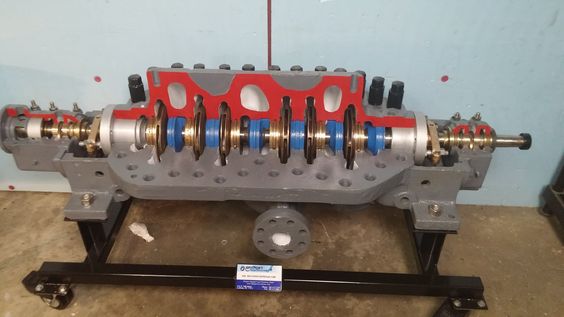
Common Industrial Centrifugal Pump Applications
Centrifugal pump utilities are common throughout a variety of commercial, domestic, and industrial markets. Some examples of centrifugal pump use are:
- Water supply for residential areas
- Sewage/slurry disposal
- Fire protection systems
- Food and beverage manufacturing
- Oil and gas industrial operations
- Chemical manufacturing
What is a gear pump?
A gear pump is a variety of positive displacement pumps. It moves a fluid by frequently enclosing a fixed amount using interlocking teeth or gears, transferring it mechanically by a cyclic pumping action. As a result, it gives a stable pulse-free flow proportional to the rotational speed of the gears.
How does a gear pump work?
Gear pumps manage the actions of rotating teeth or gears to move fluids. The rotating part develops a liquid seal with the pump casing and makes suction at the pump inlet. Fluid gets into the pump and is enclosed within its rotating gears’ cavities and transferred to the discharge. There are two fundamental designs of gear pump: internal and external.
Features and Benefits of a Gear Pump?
Gear pumps are compact and straightforward, with a confined number of moving parts. They cannot match the flow rates of centrifugal pumps or the pressure produced by reciprocating pumps but offer higher pressures and throughputs compared to vane or lobe pumps. Gear pumps are especially suited for pumping high viscosity fluids, same as oil.
External gear pumps can sustain higher pressures (up to 3000 psi) and flow rates Due to the rigid shaft support and more confined tolerances. Internal gear pumps have more satisfying suction abilities and are a better choice for high viscosity fluids, although they have an acceptable operating range from 1cP to over 1,000,000cP. As the output pressure is directly proportional to rotational speed, gear pumps are generally used for metering and blending processes. Gear pumps can be designed to handle aggressive liquids. They are commonly manufactured from stainless steel, cast iron, new alloys and composites that allow the pumps to take corrosive liquids, the same as sodium hypochlorite, sulphuric acid, ferric chloride and sodium hydroxide.
External gear pumps can also be employed for hydraulic power purposes, typically in lifting machinery, vehicles, and mobile plant equipment. Driving a gear pump in the opposite direction, using oil pumped from away in a system (generally by a tandem pump in the engine), makes a hydraulic motor. This is helpful to provide power in regions where electrical equipment is bulky, expensive or inconvenient. For instance, tractors rely on engine-driven external gear pumps to control their services.

Applications for Gear Pumps?
Gear pumps are usually used for pumping high viscosity liquids such as paints, oil, resins or foodstuffs. They are the first choice in any application where precise dosing or high-pressure output is demanded. The function of a gear pump is not significantly affected by pressure, so they also are preferred in any application where the supply is irregular.
The following table notes some common applications of internal and external gear pumps:
- Various fuel and lube oils (both internal and external)
- Polymer metering and chemical additive (external)
- Chemical blending and mixing (external)
- Industrial, agricultural and mobile hydraulic applications (external)
- Acids and caustic with composite or stainless steel construction (external)
- Resins and polymers (internal)
- Alcohols and solvents (both external and internal)
- Asphalt, bitumen, and tar (internal)
- Polyurethane foam (Isocyanate and polyol) (internal)
- Food products: cacao butter, chocolate, corn syrup, peanut butter, sugar, vegetable oils, animal feed, fillers, vegetable fats (internal)
- Paint, inks, and pigments (internal)
- Soaps and surfactants (internal)
- Glycol (internal)
Peristaltic Pump
A Peristaltic pump, referred to as a hose or tube pump, works by positive displacement’s principles. Fluid is supplied in the tubing by rollers that rotate, squeezing a soft tube against the pump housing.
As the roller passes through the tubing, it expands and forms a vacuum to help more fluid to enter. During the function, at least one roller blocks the tubing. Therefore, the necessity for valves is cancelled. The rollers are rotated either directly by a gearbox or by a motor.
Peristaltic pumps are perfect for use with viscous and corrosive fluids, as the only piece of the pump in contact with the liquid is the tubing. Using the tubing and the easily replaced head makes the pumps relatively maintenance-free.
Various tube matters are available based on their compatibility with the media being flow. They are available in different sizes and AC or DC (reversible DC pumps) and are self-priming.
Advantages of Peristaltic Technology
- Self-priming
- Dry running
- Reversible (DC)
- Flow regulation
- Excellent for applications with viscous or aggressive media
- Tolerant to contamination with particles
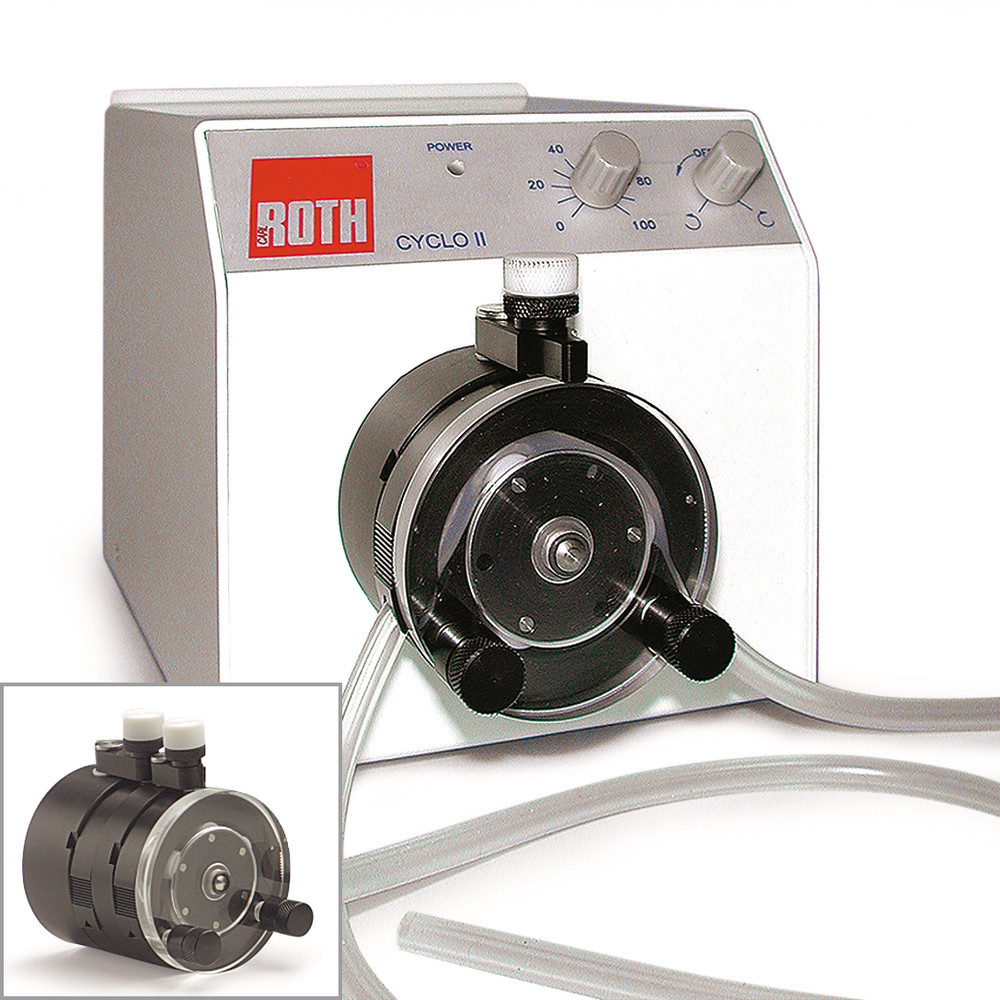
Diaphragm Pump
A diaphragm pump (also called a Membrane pump) is a positive displacement pump that employs a combination of the reciprocating action of a thermoplastic, rubber, or Teflon diaphragm and proper valves on both sides of the diaphragm (butterfly valves, check valve, flap valves, or any other form of shutoff valves) to pump a liquid.
There are three main varieties of diaphragm pumps:
- The diaphragm is sealed with one front in the fluid to be pumped and the other in air or hydraulic liquid. The diaphragm is flexible, making the volume of the pump chamber increase and decrease. A set of non-return check valves block the reverse flow of the fluid.
- They use positive volumetric displacement where the prime mover of the membrane is electro-mechanical, operating through a crank or geared motor drive, or solely mechanical, such as with a lever or handle. This system flexes the diaphragm through simple mechanical movement, and one head of the diaphragm is open to the air.
- They can employ one or more unsealed diaphragms pumped on both heads.
When the volume of a chamber is increased (the diaphragm jumping up), the pressure lessens, and fluid gets into the chamber. When the chamber pressure later rises by decreasing volume (the diaphragm jumping down), the fluid earlier drawn in is driven out. Ultimately, the diaphragm moving up once repeatedly draws fluid into the chamber, ending the cycle. The operation is the same as the cylinder in an internal combustion engine. Diaphragm Pumps produce a tight seal between the drive tool and the compression chamber, enabling the pump to compress, transfer, and evacuate the medium without using any lubricant.
An elastomeric diaphragm can be employed as a versatile, dynamic seal that eliminates many of the limitations seen in other sealing systems. They do not leak, offer slight friction, and can be assembled for low-pressure sensitivity. With the proper material consideration, diaphragms are available over a wide range of temperatures and pressures without lubrication or maintenance.
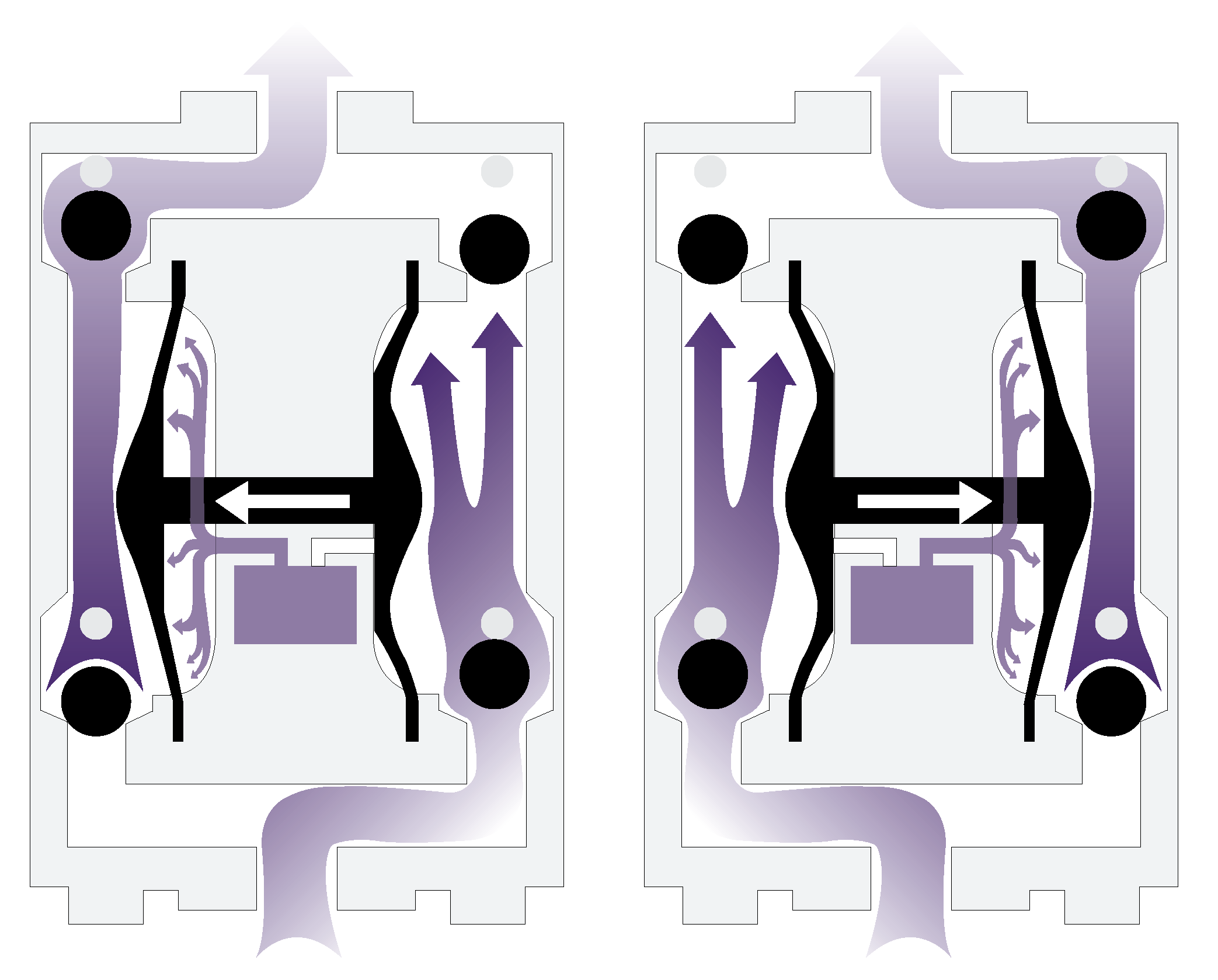
Submersible Pump
A submersible pump (electric submersible pump (ESP) or sub pump) is a machine that has a tightly sealed motor close-coupled to the pump assembly. The whole body is submerged in the liquid to be pumped. The main advantage of this type of pump is that it limits pump cavitation because of the associated problems with a high elevation variation between the pump and the fluid surface. Submersible pumps drive fluid to the surface rather than jet pumps, creating a vacuum and relying upon atmospheric pressure. Submersibles employ pressurized fluid from the surface to drive a hydraulic motor rather than an electric motor and are employed for heavy oil purposes with heated water as the motive fluid.
Submersible pumps can be found in many different applications. Single-stage pumps are applied for sewage pumping, drainage, general industrial and slurry pumping. They are also recommended with pond filters. Multiple-stage submersible pumps are usually lowered down a borehole and used for commercial, residential, municipal and industrial water abstraction(extraction), water wells, and oil wells.
Submersible pumps are also found in sewage treatment plants, fire fighting (As it is flame retardant cable), seawater handling, water well and deep well drilling, mine dewatering, offshore drilling rigs, artificial lifts, and irrigation systems.
Pumps in hazardous electrical locations used for flammable liquids or contaminated water must be engineered not to ignite the fluid or vapors.
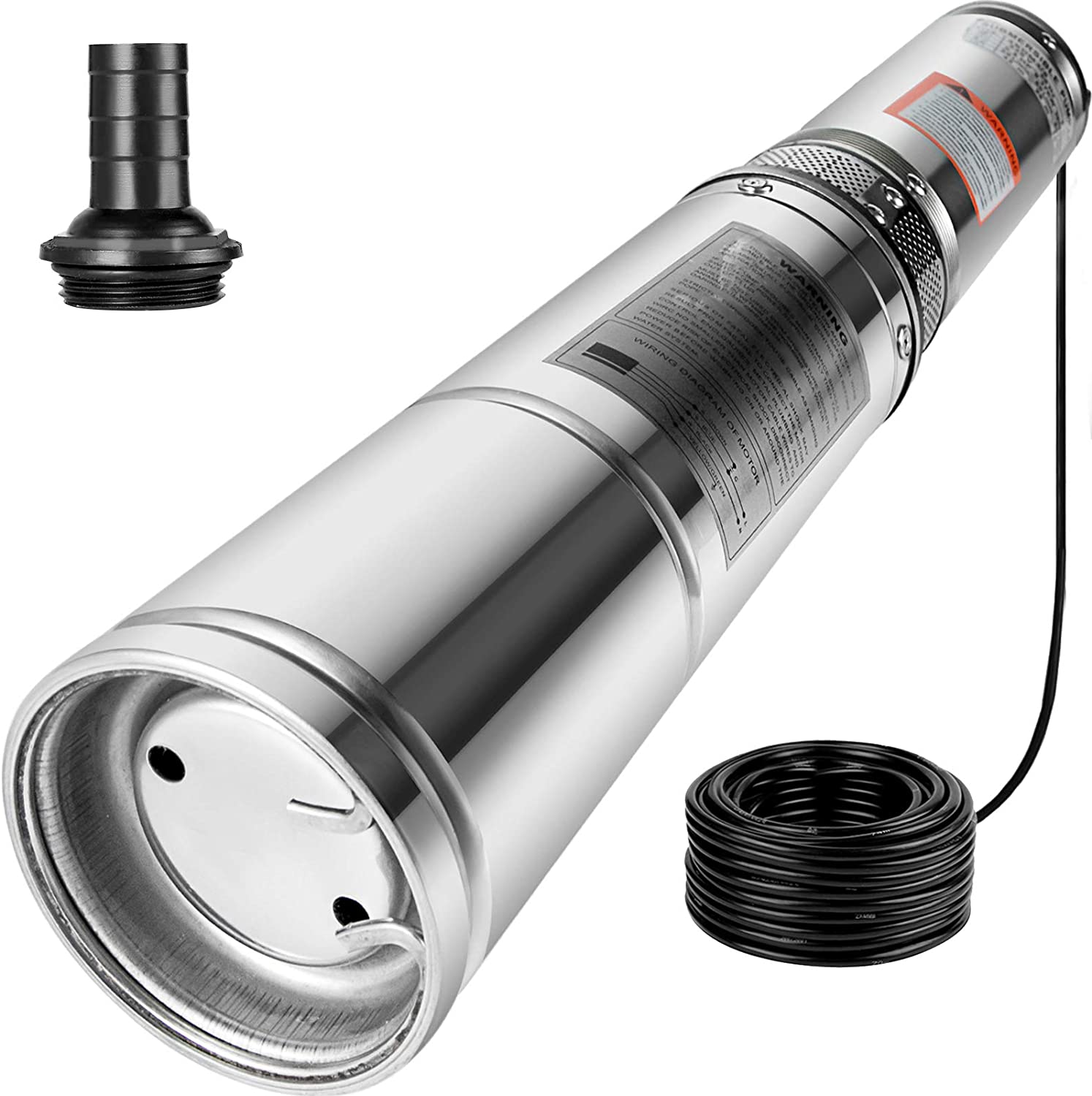
What are Self-Prime Regenerative Water Pumps?
If a pump is positioned beneath the level of the liquid to be pumped, air pressure and gravity guarantee that it is continually filled with the fluid, and there can be no access of air into the pump or suction pipe.
A pump has to be installed above the liquid level in many employment areas, for instance, when employing an underground storage container. There will be air in the suction pipes at startup, and before the pump can replace the liquid, this air must be removed or displaced. Pumps are designed to move a particular fluid, and evacuating a gas is a very distinct challenge.
We can use various methods to get around this dilemma. A secondary pump can be employed to evacuate the suction pipe. Also, an evacuation tank or non-return (foot) valve can be used to prevent fluid draining from the suction pipe when the pump is not working. However, certain solutions all require extra equipment, piping and methods. Ideally, a pump is necessary for these applications that can evacuate air from the suction at startup before starting its standard pumping form. Such a pump is known as self-priming.
Are Positive Displacement Pumps Self-Priming?
Technically, all positive displacement pumps are self-priming types. In particular, this involves rotary gear pumps (internal and external), vane pumps, lobe pumps, and diaphragm pumps. A common characteristic of all positive displacement pumps is close-tolerance parts to limit fluid returning from the outflow to the suction side. Based on the effectiveness of these seals produced by these close-tolerance parts, a positive displacement pump can vent air from its suction line. However, in dry running conditions, a pump may overheat and may lead to seal wear and pump breakdown.
There is also a risk of cavitation in reciprocating pumps when liquid begins to enter the pump, and there is a fluid/air mixture. Under these situations, vapor bubbles appear and grow on the suction side of the pump. Upon achieving the high pressure at the discharge side of the pump, the bubbles collapse fiercely, causing vibration and damage to the pumping components.
Therefore, it is essential to refer to the company before using a positive displacement pump where it needs self-prime and should be run dry for any period.
Are Centrifugal Pumps Self-Priming?
With centrifugal pumps, the pumping energy is generated by transferring rotational energy from the impeller to the fluid. There are no seals within the suction and discharge head of the pump. This means that centrifugal pumps are weak with gases and cannot evacuate air from a suction pipe when the liquid level is lesser than that of the impeller. In such situations, the pump is air-bound, and there is a risk of overheating: usually, pumps rely on the pumped liquid to lubricate and cool the pump’s bearings.
However, with a few changes to the basic design, a centrifugal pump can be self-priming. The impeller and volute casing is typically surrounded by a container so that it can continually be immersed in a fluid sufficient to get the pump commenced and provide the pump with cooling and lubrication – the time taken to prime the pump is not extreme.
It is essential that a self-priming centrifugal pump’s reservoir is filled correctly with liquid after launching. “Self-priming” in this article means that the pump can use liquid collected in its housing to produce a vacuum on the suction line. Even a self-priming centrifugal pump will not work when dry. With appropriate seals and bearings, a centrifugal pump can endure dry running for a short time, but this is not recommended for long periods.
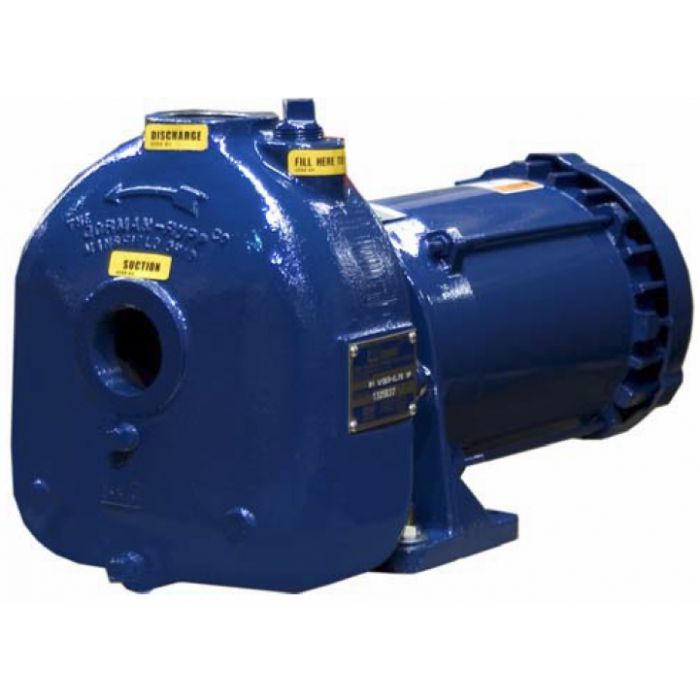
Buy Equipment or Ask for a Service
By using Linquip RFQ Service, you can expect to receive quotations from various suppliers across multiple industries and regions.
Click Here to Request a Quotation From Suppliers and Service Providers
Read More on Linquip
- Different Types of Pumps: Ultimate Guide
- A Cheat Sheet For The Types of Pump Couplings
- 12 Types of Water Pressure Pumps with Applications & Characteristics
- Difference Between Pump and Motor
- What Are Air Source Heat Pumps? A Complete Guide
- What Is a Water Booster Pump and How Does It Work?
- The 8 Best Water Pumps of 2022 with Pros. and Cons
- Parts of Water Pump
- Pump: Working Principles, Function & Diagram
- 3 Types of Well Pumps + Applications
- 3 Types of Heat Pump + Working Principle ( Clear Guide)
- 3 Types of Oil Pumps + Working Principle & PDF
- Types of Dynamic Pumps
- Types of Fuel Pump
- 7 Best RV Water Pump In 2022 (Clear Guide & Review)
- 5 Types of Concrete Pumps + PDF
- 6 Type of Sump Pump and Which Are Better to Buy?
- Types of Pump Casings (In Centrifugal Pumps & Others) + Pros & Cons
- 5 Types of Vacuum Pump and Applications + PDF
- 6 Main Types of Dynamic Pumps: Examples + PDF
- 5 Main Types of Fuel Pump & How They Works?
- 3 Types of Vane Pumps: Working Principles & Application
- Types of Piston Pumps
- Types of Fire Hydrant Systems
- Types of Screw Pumps: How Each Type Gives Benefits?
- Types of Submersible Pumps: All Classification With Details
- Types of Centrifugal Pumps: All Classification & Working Principles

